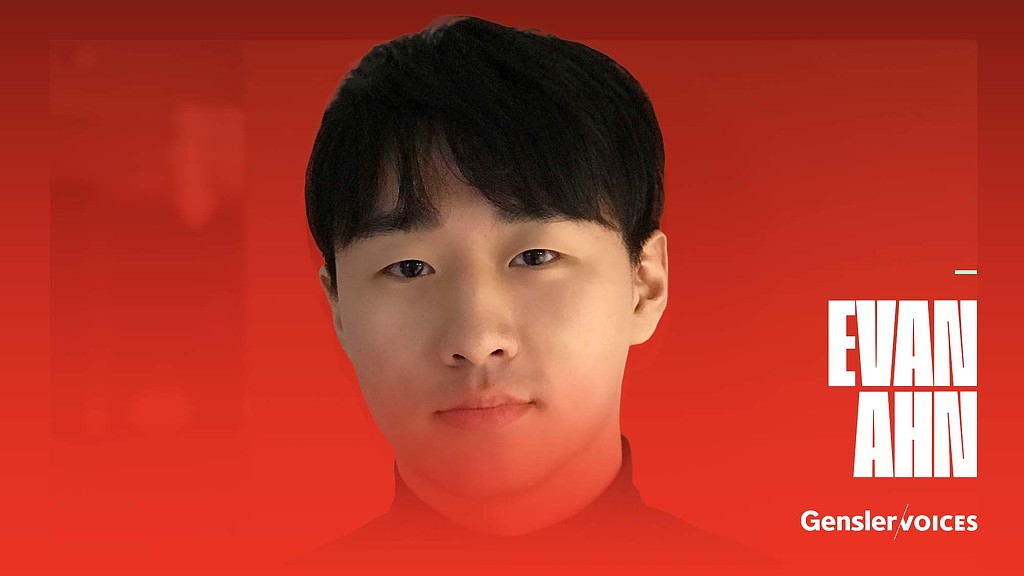Gensler Voices: Evan Ahn on the Prioritization of Space
October 09, 2023
This Q&A is part of a series of interviews with Gensler architects, designers, and others in the firm about their career journey, and the impact that design and architecture can have on our communities and the human experience. Here, we sit down with Evan Ahn, a designer in our Detroit office:
How can architecture and design make space that’s inclusive for everyone?
I believe that architects hold a privileged position as their spatial creations have a profound influence on people’s daily lives. And thus, we bear a social responsibility to contribute to the betterment of society.
As we have witnessed recently, the pandemic has sparked changes in spatial dynamics. If we could predict the future, it is likely that we will witness a significant polarization of space. Physical space with lower density and thus more safety will be increasingly occupied by the privileged, while others may be pushed towards online virtual spaces, such as the metaverse, and spend more time on their smartphones. This polarization of space limits social communication. And as designers, it becomes imperative to create spaces that consciously foster social mixes and facilitate interaction for all individuals.
How were you first introduced to architecture?
I had two childhood experiences that left a lasting impact.
#1: Some people may have had the experience of realizing how much time has passed after doing something, and for me, that realization came through drawing.
#2: As a child, I visited my relative’s two-story house, a rarity in typical Korean households, where apartment living is prevalent. Within that house, I encountered a staircase, a feature absent from my own home. I distinctly remember the joy of crawling, climbing, and sliding along those steps. It was probably this moment that I developed a vague longing for a home and a fascination with the concept of space took root. These two early memories probably intertwined, igniting a desire to pursue a career in architecture.
If you could impart any piece of advice to individuals beginning their design career, what would it be?
Ask yourself “why” at every step of the design process. It may sound pedantic, but it’s a lesson I learned during my Cornell education that had a big impact. Initially, it was a challenge because it made me hesitant to explore radical ideas, which are often encouraged in student work. However, I later realized that this analytical approach doesn’t restrict creativity; rather, it provides a solid foundation for logically watertight design. As I gained more experience through real projects, I found a balance between the analytical “why” approach and the hard-to-explain intuitive sensibilities of design. This balanced perspective has been immensely helpful in my career so far.
Most career journeys aren’t linear. What has yours looked like?
When I first entered the professional world, I had a mindset of absorbing knowledge from any opportunity that came my way. Initially, I spent a year in New York City working primarily on residential tower construction documentation. However, I then made a significant shift and spent the following six years in Beijing, working on large-scale projects focused on retail centers and office towers. This phase involved intense work on concept development, SD and DD, and engaging in client-facing meetings.
Seeking a different perspective, I transitioned to the client side and joined Wanda, one of the largest Chinese developers. Here, I took on the role of managing design architects and collaborating on designs for a new generation retail center. These projects aimed to create a space that encompassed culture, civic elements, and a life center concept, moving beyond a traditional mall.
Recently, I made the decision to transition back to the design side of the industry. Drawing upon my accumulated knowledge and experiences, I now focus on creating designs that cater to the specific needs of clients. While my career journey has involved moving between different countries and practice areas, I believe that being a good designer is a long-term commitment that requires continuous learning and growth.
What are you most excited for when it comes to the future of architecture and design?
The growing interest and hype around the metaverse is particularly exciting for me. It offers immersive virtual experiences and the potential for architects to create captivating digital spaces (which we are already doing in our 3D software). The marketability of virtual space design is an exciting prospect, as it allows us to expand our professional horizons beyond traditional physical spaces using our accumulated expertise to design for experience. What’s fascinating is that these designs can extend beyond individual-scale experiences and encompass entire cities or even countries within the virtual realm. This means we can envision and shape digital environments without limitations of resources and no specific client. Overall, the future holds immense potential for architecture and design to evolve beyond traditional boundaries and embrace the limitless possibilities of virtual realms.
For media inquiries, email .
